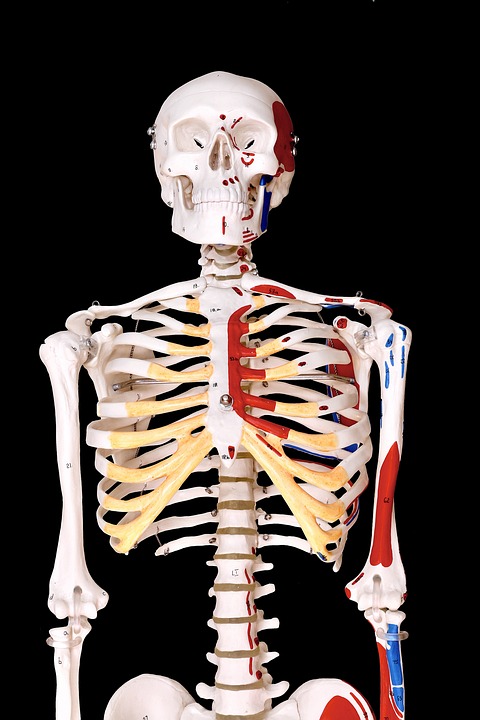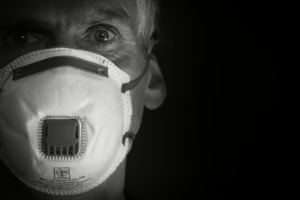The Catabolic Process: How Our Bodies Transform Molecules for Energy
Introduction
The human body is a magnificent machine, constantly working to sustain life by converting various inputs into energy. One of the most crucial processes that allows this to happen is catabolism, a set of metabolic pathways that breaks down molecules into smaller units, releasing energy in the process. Understanding catabolism is not just an academic exercise; it has practical implications for our health, nutrition, and overall well-being. This article delves into the intricacies of the catabolic process, illustrating how our bodies transform food into energy, the types of molecules involved, and the implications for health.
1. What is Catabolism?
1.1 Definition and Overview
Catabolism is a metabolic pathway that involves breaking down complex molecules into simpler ones, a process that generates energy in the form of adenosine triphosphate (ATP). The term "catabolic" is derived from the Greek word "katabole," meaning "to throw down." It contrasts with anabolism, which is the process of building complex molecules from simpler ones, requiring energy input.
1.2 The Role of Catabolism
Catabolism serves several essential functions in the body:
- Energy Production: The most critical role of catabolism is the generation of ATP, which provides energy for various cellular processes.
- Metabolic Intermediates: Catabolic pathways produce intermediates that can be used in anabolic processes.
- Waste Management: The breakdown of complex molecules also helps eliminate waste substances from the body.
1.3 Types of Catabolism
Catabolism can broadly be classified into two categories:
- Carbohydrate Catabolism: The breakdown of carbohydrates into glucose and other simple sugars.
- Lipid and Protein Catabolism: The breakdown of fats and proteins into glycerol, fatty acids, amino acids, and other compounds.
2. The Biochemical Pathways of Catabolism
2.1 Glycolysis
One of the most crucial pathways in carbohydrate catabolism is glycolysis, the process through which glucose is broken down to pyruvate, producing a small amount of ATP and NADH (nicotinamide adenine dinucleotide).
2.1.1 Phases of Glycolysis
Glycolysis consists of two main phases: the investment phase and the payoff phase.
- Investment Phase: This phase consumes two ATP molecules to phosphorylate glucose, making it more reactive.
- Payoff Phase: In this phase, four ATP molecules and two NADH molecules are produced, resulting in a net gain of two ATP molecules per glucose molecule.
2.1.2 Importance of Glycolysis
- Anaerobic Energy Production: Glycolysis can occur without oxygen, making it vital during intense exercise.
- Metabolic Flexibility: The end products of glycolysis can enter various catabolic pathways, providing versatility.
2.2 The Krebs Cycle
Once pyruvate enters the mitochondria, it undergoes further breakdown in a cycle known as the Krebs cycle (or citric acid cycle).
2.2.1 Steps in the Krebs Cycle
The Krebs cycle consists of a series of enzymatic reactions that convert acetyl-CoA into carbon dioxide, producing NADH, FADH₂, and GTP.
- Acetyl-CoA formation: Pyruvate is converted into acetyl-CoA.
- Cyclic Reactions: Acetyl-CoA enters the cycle, where it is transformed through various intermediates.
- Energy Production: Each turn of the cycle produces high-energy electron carriers (NADH and FADH₂) that are vital for ATP synthesis.
2.2.2 Importance of the Krebs Cycle
- Central Energy Hub: The Krebs cycle acts as a central hub in cellular metabolism, linking carbohydrate, fat, and protein catabolism.
- Carbon Dioxide Production: It is a significant source of carbon dioxide, a waste product expelled by the lungs.
2.3 Oxidative Phosphorylation
The final stage of catabolism is oxidative phosphorylation, taking place in the mitochondria.
2.3.1 Electron Transport Chain (ETC)
NADH and FADH₂ generated from earlier pathways donate electrons to the ETC, which generates a proton gradient across the inner mitochondrial membrane.
2.3.2 ATP Synthase
As protons flow back into the mitochondrial matrix, ATP synthase utilizes this energy to produce ATP from ADP and inorganic phosphate.
2.3.3 Importance of Oxidative Phosphorylation
- High Energy Yield: This process produces the bulk of ATP (about 30-32 ATP molecules per glucose molecule).
- Oxygen Dependence: It requires oxygen, making it a critical process in aerobic organisms.
3. The Catabolism of Fats
3.1 Lipolysis
The catabolism of fats begins with lipolysis, the breakdown of triglycerides into glycerol and fatty acids.
3.1.1 Biochemical Pathway of Lipolysis
Lipolysis is catalyzed by enzymes known as lipases. This process typically occurs in adipose tissue and leads to the mobilization of fat stores.
3.1.2 Importance of Lipolysis
- Energy Reservoir: Fats serve as a dense energy source, providing more than twice the energy yield of carbohydrates per gram.
- Fatty Acid Utilization: Free fatty acids are transported into the mitochondria for further catabolism.
3.2 Beta-Oxidation
Fatty acids undergo a process known as beta-oxidation to generate acetyl-CoA.
3.2.1 Steps of Beta-Oxidation
- Activation: Fatty acids are activated and transported into the mitochondria.
- Sequential Cleavage: The fatty acid chains are progressively cleaved into two-carbon units, producing acetyl-CoA and high-energy electron carriers (NADH and FADH₂).
3.2.2 Importance of Beta-Oxidation
- Energy Yield: Each cycle of beta-oxidation generates acetyl-CoA, NADH, and FADH₂, which are critical for ATP production.
- Role in Fasted State: During fasting or prolonged exercise, fat catabolism becomes a primary energy source.
4. The Catabolism of Proteins
4.1 Proteolysis
Proteins undergo proteolysis, which involves the breakdown of proteins into amino acids.
4.1.1 Enzymatic Process
Proteolysis is facilitated by proteases that cleave peptide bonds, enabling the release of individual amino acids.
4.1.2 Importance of Proteolysis
- Amino Acid Pool: The released amino acids can be used for energy or to synthesize new proteins.
- Nitrogen Disposal: Amino acid catabolism produces ammonia, which must be detoxified into urea.
4.2 Deamination and the Urea Cycle
Before amino acids can be catabolized for energy, they undergo deamination, the removal of the amino group.
4.2.1 Biochemical Reactions
The deaminated amino acids are converted into intermediates that can enter the Krebs cycle.
4.2.2 The Urea Cycle
The urea cycle is a critical pathway that processes ammonia, a toxic byproduct of amino acid catabolism, into urea for safe excretion.
4.3 Energy Production from Amino Acids
Amino acids can also serve as substrates for gluconeogenesis—creating glucose from non-carbohydrate sources—allowing the body to produce energy when carbohydrates are scarce.
5. Regulation of Catabolism
5.1 Hormonal Regulation
Catabolic processes are closely regulated by hormones to maintain energy homeostasis. The primary hormones involved include:
- Insulin: Promotes anabolism and inhibits catabolic pathways.
- Glucagon: Stimulates catabolism, particularly of fats, during fasting.
- Cortisol: Mobilizes amino acids and promotes gluconeogenesis during stress.
5.2 Cellular Signaling Pathways
Signaling pathways involving AMP-activated protein kinase (AMPK) play a crucial role in sensing energy status and regulating catabolic processes accordingly.
6. Implications for Health and Nutrition
6.1 Catabolism and Exercise
Understanding catabolic processes is essential for optimizing athletic performance. During intense exercise, the body shifts from carbohydrate to fat metabolism, highlighting the importance of both macronutrients in athletic training.
6.2 Impacts of Fasting and Starvation
Prolonged fasting forces the body to rely heavily on catabolic pathways for energy. While this can lead to fat loss, it can also cause muscle wasting if protein catabolism is not properly managed.
6.3 Metabolic Disorders
Impaired catabolic processes can lead to metabolic disorders such as diabetes, obesity, and metabolic syndrome. Addressing these issues often requires a combination of dietary, exercise, and, in some cases, pharmacological interventions.
7. Conclusion
The catabolic process is fundamental to our existence, allowing our bodies to transform food into the energy necessary for life. Understanding how catabolism operates at both a biochemical and physiological level provides valuable insights into health and nutrition. As we learn more about these processes, we can make informed choices about our diets and lifestyles that can promote optimal health and performance. Ultimately, the interplay between catabolism and anabolism serves as a reminder of the delicate balance required to maintain a healthy body.
References
[1] Berg, J. M., Tymoczko, J. L., & Stryer, L. (2016). Biochemistry. W.H. Freeman and Company. [2] Nelson, D. L., & Cox, M. M. (2017). Lehninger Principles of Biochemistry. W.H. Freeman. [3] Ghosh, A. (2021). Energy Metabolism in Health and Disease. International Journal of Molecular Sciences, 22(6), 2931. [4] Plaisance, E. P., & Oakley, C. (2015). The Role of Exercise in Catabolic Processes. Sports Medicine, 45(5), 657-664. [5] Flanagan, B. (2020). Understanding Protein Catabolism in Health and Disease. Journal of Nutrition and Metabolism, 2020. [6] Sutherland, J. M., & Adams, M. T. (2018). Hormonal Regulation of Catabolic Pathways. Endocrine Reviews, 39(3), 341-360. [7] McGarry, J. D., & Brown, N. F. (1997). The Role of the Mitochondria in the Regulation of Fatty Acid Oxidation. Biochimica et Biophysica Acta, 1351(1), 113-128. [8] Titchenal, C. A., & Regan, M. (2012). Nutritional Implications of Catabolism in Lean and Obese Individuals. Nutrition Reviews, 70(11), 674-683.This article provides a detailed exploration of the catabolic process, emphasizing its significance to human health and energy transformation. Readers are encouraged to implement this knowledge into their daily lives, promoting optimal metabolic health through informed dietary and lifestyle choices.


























Add Comment